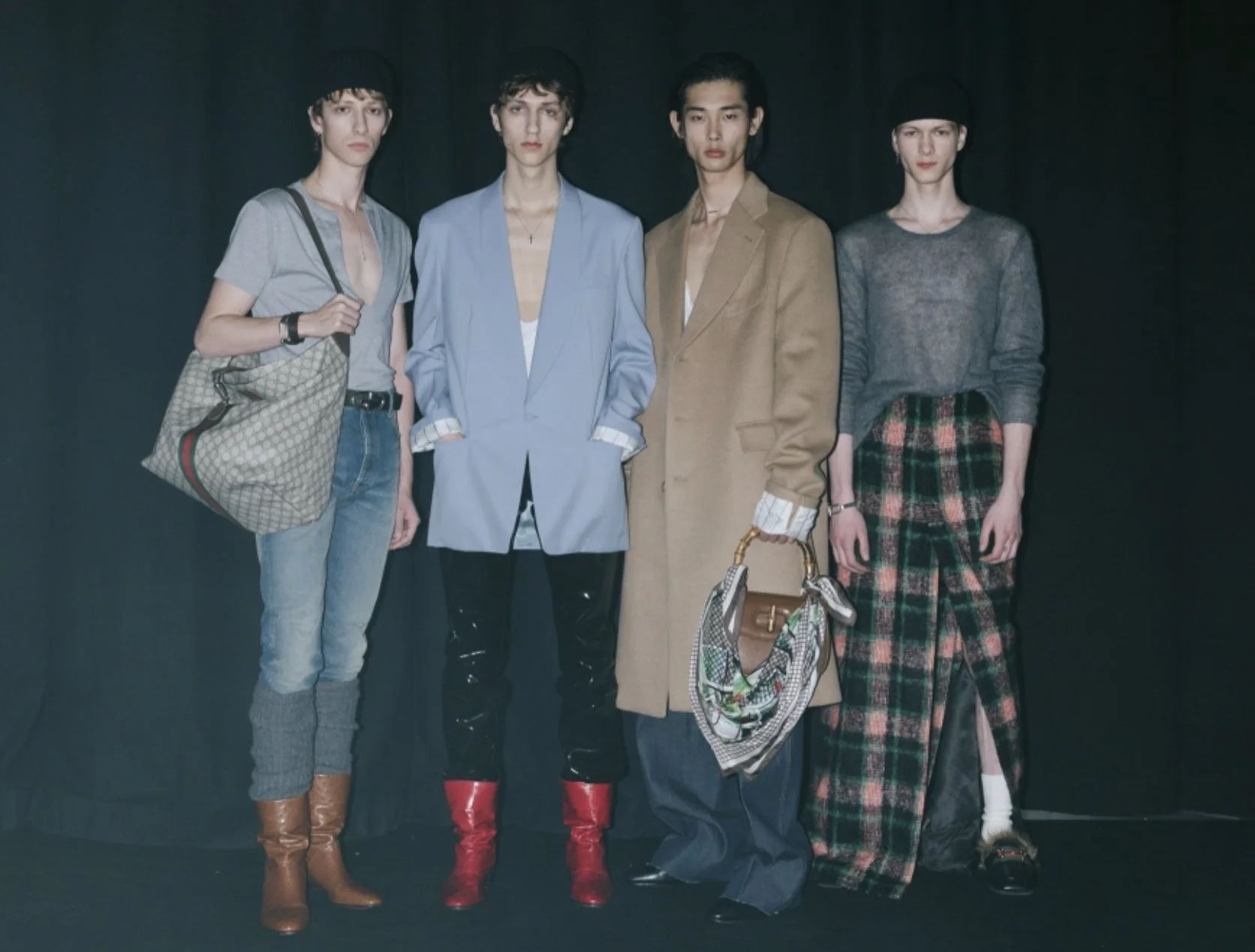Gucci Opens Milan Fashion Week as it Says Goodbye to its Most Relevant Era
As Milan Fashion Week kicks off we say goodbye to maximalist and whimsical Gucci brought by fashion’s Jesus; Alessandro Michele.
Courtesy of WWD
It truly is the end of an era, one that reached new audiences and managed to redefine how luxury trickles down into the mainstream. Michele saved Gucci by redefining it, just like his predecessors had done before. This time he introduced us to a world where freaks, geeks and gender fluidity were the norm. His eccentric and quirky take on the 70’s reflected a balance between references from the past intertwined with contemporary culture, like their Stanley Kubrick inspired campaign. Michele, whether you liked his designs or not, was a visionary and single handedly resurrected a brand that even though it saw its biggest surge ever is now aiming towards a more subdued direction.
Courtesy of Vogue
We’ve seen this happen many times, creative directors who create universes and fantasies being replaced by a more toned down more commercial creative direction. If we could have it out way it would be John Galiano’s masterpieces all the way but business wise Chiuri’s Dior is more sellable.
It all comes down to sales, fashion is not just art it’s a business.
So it’s not surprising that Kering is looking to remove some visual drama. Is this an indication that Gucci’s future holds a tamer reinterpretation of its past? Will it be settling down with oversized silhouettes, Heidi Slimane inspired styling and less sexy versions of Tom Ford's Gucci?
Gucci’s menswear fw23 Milan show was described as a collective of expressions conceived by their in-house team. This means that what we saw on the runway was a visual reinterpretation of Gucci’s past eras. Adding Tom Ford’s sex appeal through deep plunge t-shirts, knee cuts, slashes and a whisk of Y2K essence. Obviously not as sexy and controversial as Tom Ford's designs where, I mean none of his campaigns would be approved today, but we still see his pants that barely hung at the models hips and heavy use of sheer fabrics.
Courtesy of Vogue
Michele’s opulence and theatrics were not present but that doesn’t mean we weren’t introduced to many new Gucci facets. A trajectory that took us through relaxed tailored 70’s suits, motorbike fashionista, 2000's rock and roll era, ballet core and a casual flex take on anything Heidi Slimane. Gucci really said “hey, there is something for everyone.” There wasn’t a clear identity or aesthetic to follow which I like as maybe 2023 is the year we will step away from impressive designs only for them to come back stronger in the next few seasons.
Courtesy of WWD
The collection was welcomed with mixed feelings, many sharing their disappointment with harsh criticism comparing it with H&M and Zara which is not a compliment. Yes, there was an obvious lack of flamboyant look, pussy bows, loud prints and Michele’s theatrical essence but there was a design proposal and every look narrates a story referencing past moments of the fashion house. Gucci’s double-g logo is probably one of the world’s most recognizable logo and here we saw how it was incorporated subtly as well as the amount of accessories. With my favorite being the yellow shearling bag, need it now! Of course the house’s now iconic loafers where present which are now a symbolic heritage of the brand.
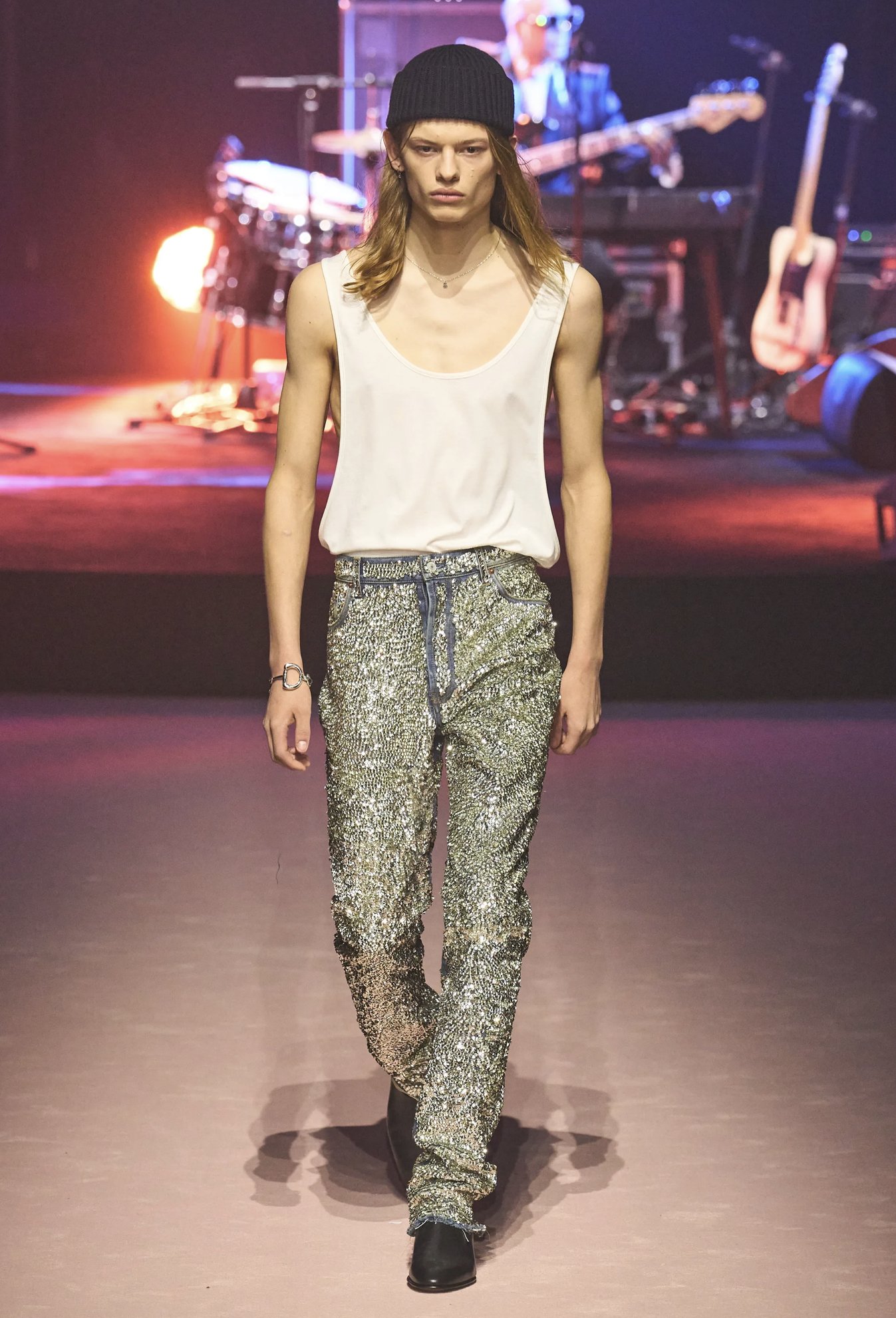

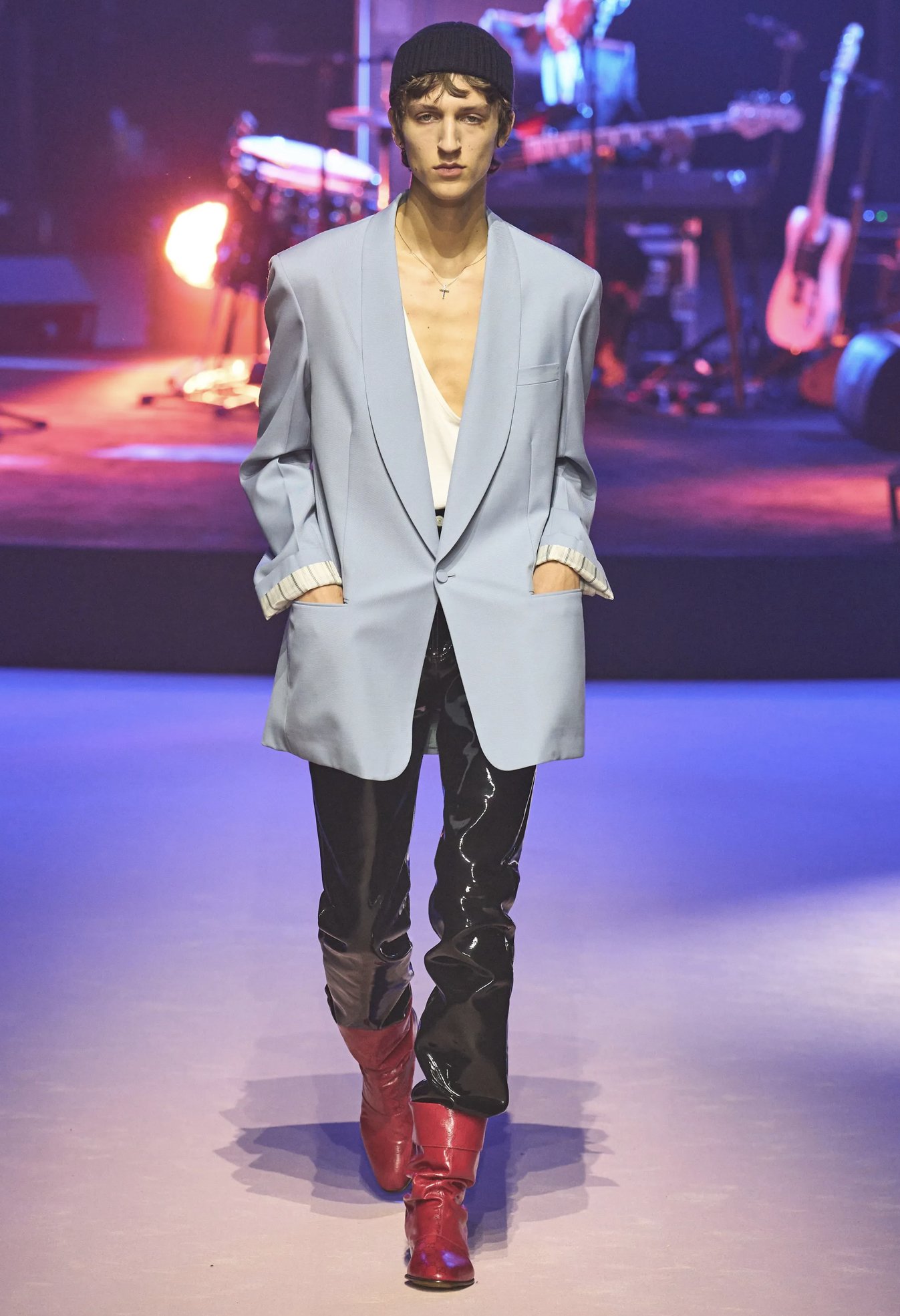

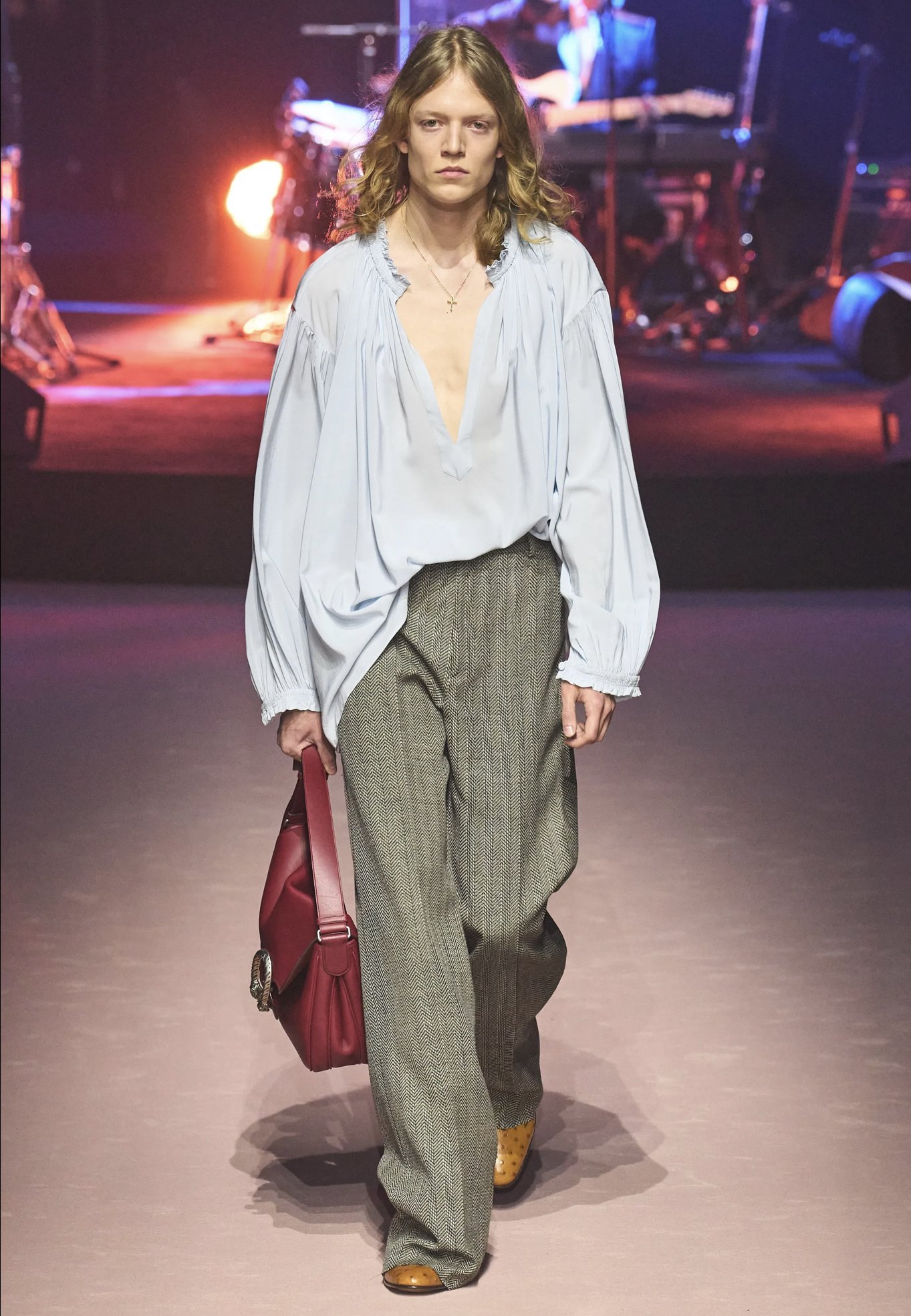
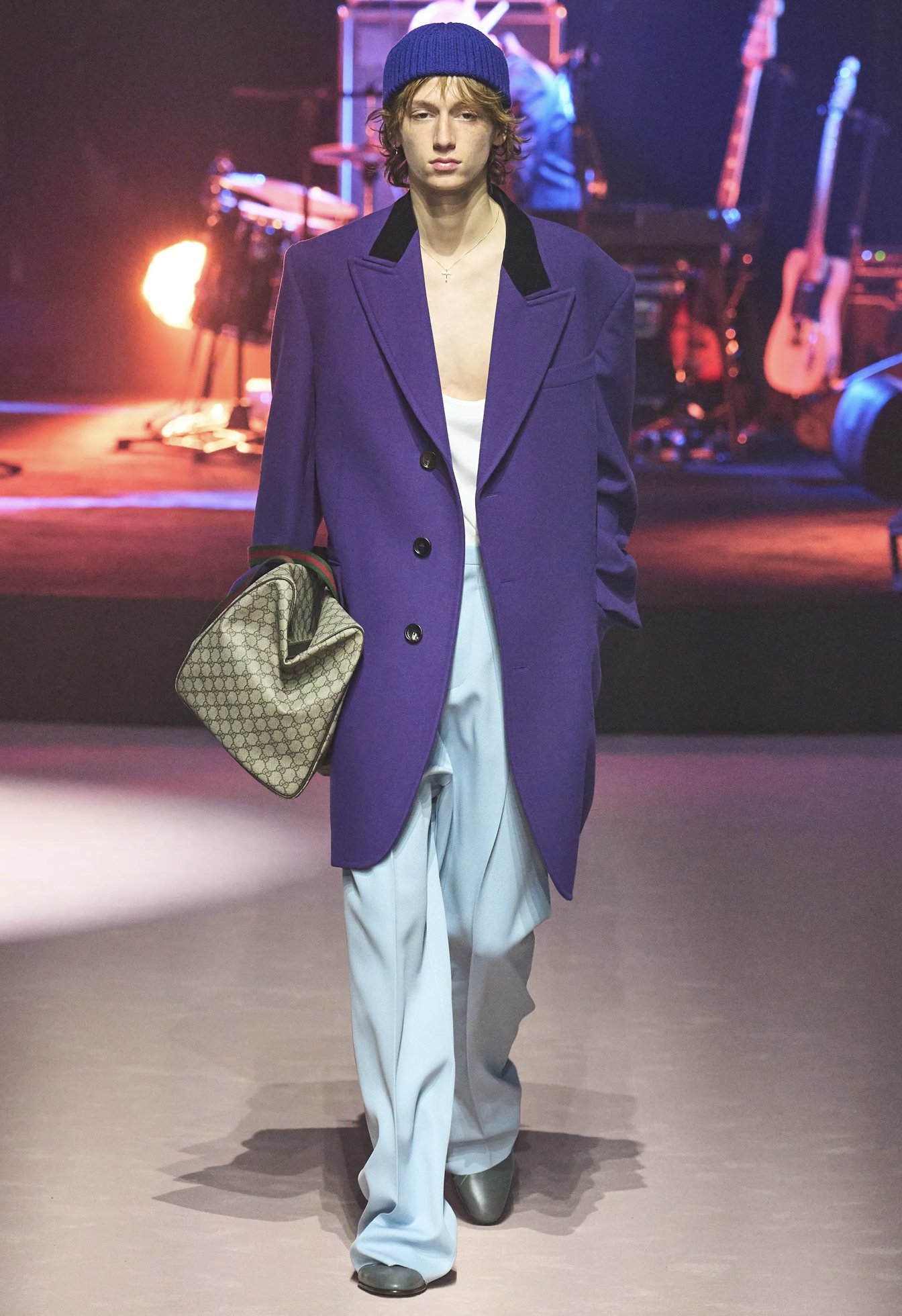
So will this new way of modernizing and keeping relevant Gucci by stepping away from maximalism will work? We can only sit and wait for what they have in store next.
Alessandro Michele’s Gucci will forever be remembered as he was my generation's theatrical designer who modernized a fashion house through an unexpected way. Blending surrealism, couture, the 70’s and popular culture. Speaking to a generation that welcomed his eccentric vision and most importantly as mentioned before changed the way luxury is consumed and looked at.


